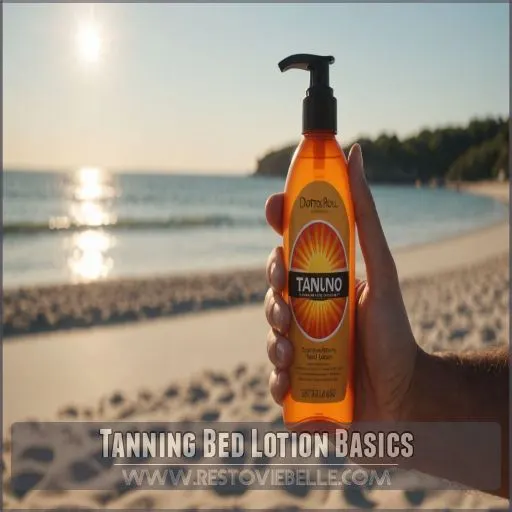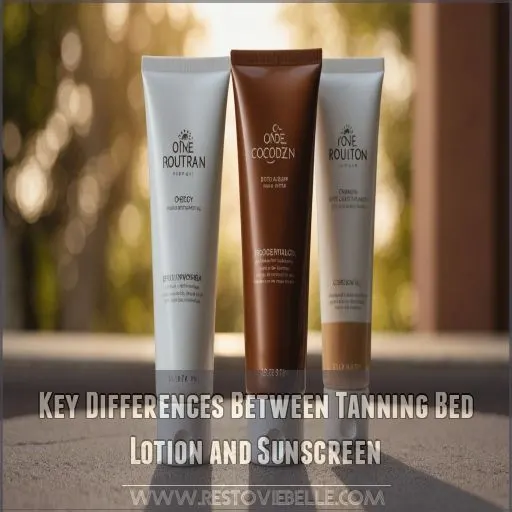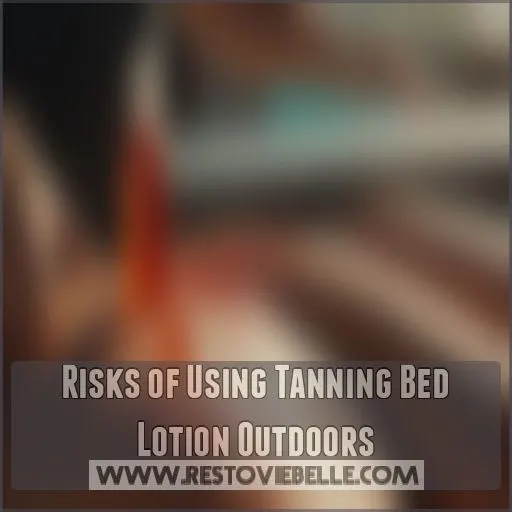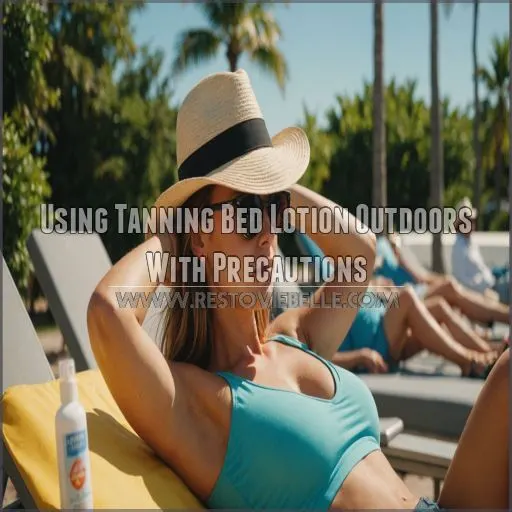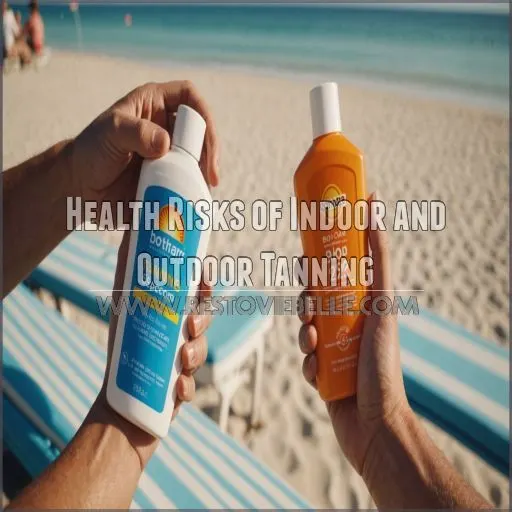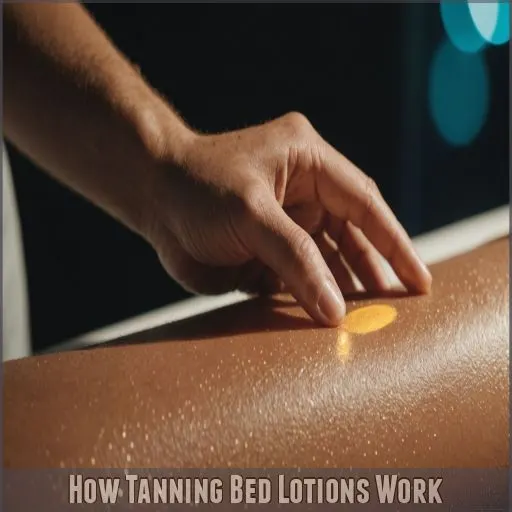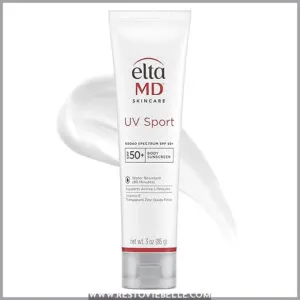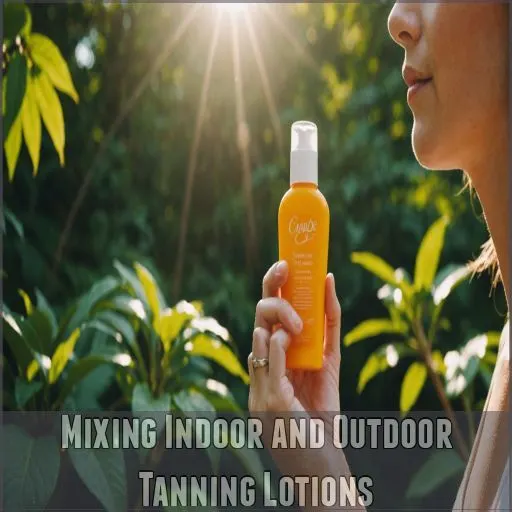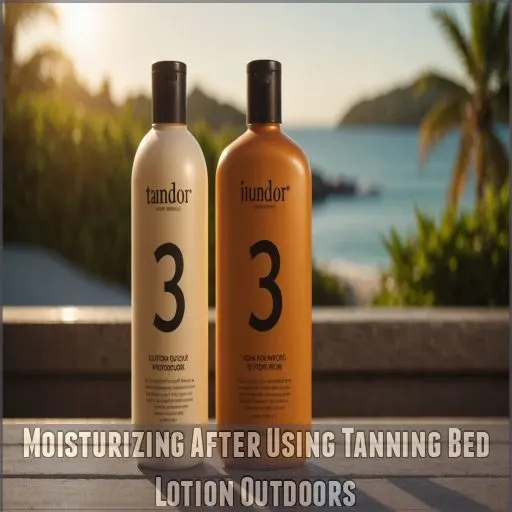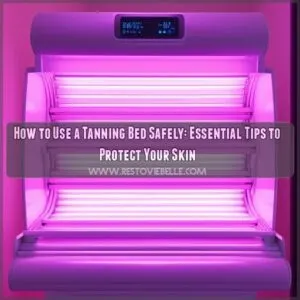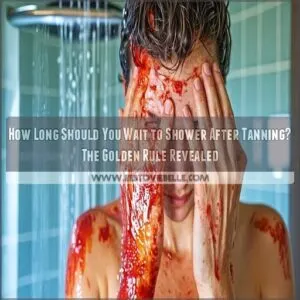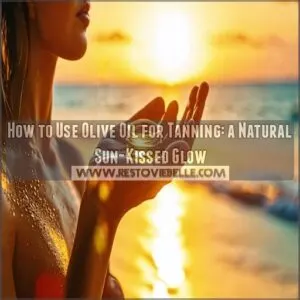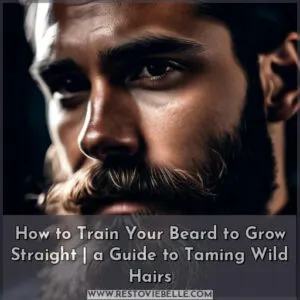This site is supported by our readers. We may earn a commission, at no cost to you, if you purchase through links.
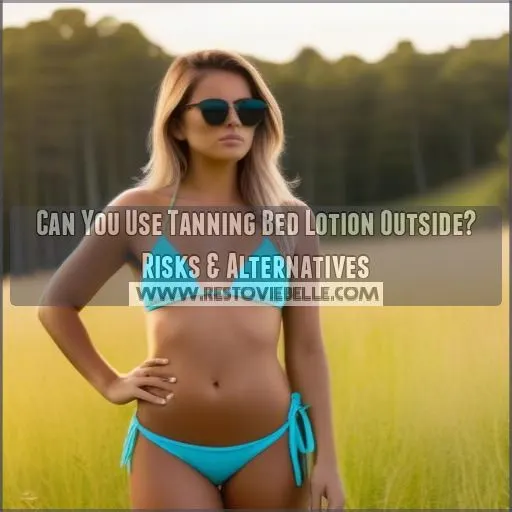 Ever wondered if you can use tanning bed lotion outside? Technically, you can, but it’s like bringing a rubber duck to a swimming race—doesn’t quite do the job.
Ever wondered if you can use tanning bed lotion outside? Technically, you can, but it’s like bringing a rubber duck to a swimming race—doesn’t quite do the job.
Tanning bed lotions don’t have SPF, so you’re not getting any protection from harmful UV rays. You might end up looking like a lobster instead of a bronzed beauty.
For outdoor fun, sunscreen is your trusty sidekick, offering both protection and a chance at a golden glow. Think of it as investing in your skin’s future.
Curious about mixing your indoor favorites with outdoor must-haves? There’s more to explore on that!
Table Of Contents
- Key Takeaways
- Tanning Bed Lotion Basics
- Key Differences Between Tanning Bed Lotion and Sunscreen
- Risks of Using Tanning Bed Lotion Outdoors
- Using Tanning Bed Lotion Outdoors With Precautions
- Health Risks of Indoor and Outdoor Tanning
- How Tanning Bed Lotions Work
- Suitable Alternatives to Tanning Bed Lotion Outdoors
- Mixing Indoor and Outdoor Tanning Lotions
- Moisturizing After Using Tanning Bed Lotion Outdoors
- Frequently Asked Questions (FAQs)
- Do you need a tanning bed lotion?
- Would going to tanning bed help psoriasis?
- Can you use indoor tanning lotion outside?
- Can you leave lotion in a tanning bed room?
- Can you use tanning bed lotion to tan outdoors?
- What is the difference between indoor and outdoor tanning lotion?
- Can you use tanning lotion without a tanning bed?
- Can you use a tanning accelerator in the sun?
- Can tanning bed lotion be used for sun protection?
- Are there age restrictions for using tanning lotions?
- Can tanning lotions cause allergic reactions outdoors?
- Are natural ingredients effective in tanning lotions?
- What brands offer travel-size tanning lotions?
- Conclusion
Key Takeaways
- Tanning bed lotions don’t provide any sun protection, so you’re asking for a nasty sunburn if you use them outdoors. Stick to a proper sunscreen with an SPF of 30 or higher to keep your skin safe and healthy.
- Mixing indoor and outdoor tanning products is a recipe for disaster. Their formulas just don’t play nice, leaving your skin vulnerable to damage. Keep it simple: use sunscreen designed for outdoor use.
- Tanning bed lotions are made for brief, intense indoor sessions, not the varied UV exposure outside. Using them outdoors can amplify harmful rays and increase your skin cancer risk.
- While tanning bed lotions may give you an instant bronze look, that look fades faster than a summer romance. For a long-lasting, healthy tan, focus on sun protection first, then add a touch of bronzer if you want an extra boost.
Tanning Bed Lotion Basics
Tanning bed lotion is designed to protect your skin from the intense UV rays in indoor tanning beds, not the sun.
It’s formulated to promote melanin for a deeper, darker tan – and some even contain bronzing agents for an instant glow.
Protecting Skin From Artificial UV Rays
When you’re basking under artificial UV rays, it’s essential to understand tanning bed safety.
Using tanning bed lotion indoors? Great for enhancing the effect. But know this: these lotions don’t protect against UV ray exposure—they amplify it!
Avoid sun protection myths; remember, they do nothing for sun sensitivity or skin damage. Keep your skin safe and healthy.
Promoting Melanin Production for Tan
You’ve nailed protecting your skin from artificial UV rays.
Now, let’s talk melanin—the body’s magic tan potion! Tanning bed lotions often contain tyrosine, a key ingredient that boosts melanin production, enhancing your natural tan while keeping exposure time short.
Using tanning bed lotions with ingredients like caffeine and artichoke extract can also help reduce the appearance of cellulite by stimulating circulation and firming the skin cellulite reduction techniques.
Remember, a tanning accelerator isn’t about shortcuts but about getting more bang for your bronzed buck!
Bronzing Agents for Instant Tan
Achieving a sun-kissed look isn’t just about promoting melanin.
Bronzing agents in tanning bed lotions offer you an instant tan, but watch out when using high-pressure beds and UVB rays for melanin production boost
! It’s like borrowing beauty on credit.
Consider these:
- Bronzer Types: Choose wisely for skin tone.
- DIY Bronzers: Economical but tricky.
- Instant Tan Risks: Think streaks.
- Bronzer Longevity: Fades quickly.
Watch those sunbathing pitfalls!
Key Differences Between Tanning Bed Lotion and Sunscreen
You might think tanning bed lotion and sunscreen are the same, but they’re like comparing apples to oranges.
Tanning lotions often lack the sun protection factor needed for outdoor activities.
They can leave your skin feeling like a greasy frying pan without the added benefit of water resistance.
Broad-Spectrum SPF Protection
Although tanning bed lotions promise a bronze glow, they can’t hold a candle to broad-spectrum SPF protection.
Sunscreen shields you from harmful UVA and UVB rays, unlike tanning lotions that lure you outdoors. Why gamble with skin protection? Don’t fall for SPF myths—use sunscreen instead!
| Feature | Sunscreen |
|---|---|
| Protection | UVA & UVB |
| Ideal For | Daily use |
| Key Benefit | Skin protection |
| Formulation | Active ingredients |
Water-Resistance and Greasy Feel
Imagine this: suntan lovers lathering on best tanning lotions outdoors and finding their skin slicker than a dance floor
.
It’s a slippery slope, folks! Tanning bed lotions aren’t water-resistant, leaving you wondering about greasy residue removal and less outdoor tanning safety.
Instead, opt for water-resistant sunscreens, which allow better sun protection while keeping skin hydration benefits intact.
Choose wisely!
Risks of Using Tanning Bed Lotion Outdoors
Tanning bed lotion isn’t made for the great outdoors.
Using it outside could leave your skin vulnerable to nasty sunburns and other skin damage – yikes!
It’s just not water-resistant, so it’ll wash right off if you go for a dip.
Stick to a proper sunscreen instead, friend.
Increased Risk of Sunburn and Skin Damage
While you might think tanning bed lotions can double as outdoor sun protection, think again.
These lotions usually lack SPF, leaving your skin vulnerable to sunburn and damage from UV rays, which greatly increases your skin cancer risk.
Opt for safer alternatives:
- Use broad-spectrum SPF sunscreen
- Stay in shaded areas
- Wear protective clothing
Lack of Water-Resistance for Swimming
Enjoy a sunny day without risking your safety! Many tanning bed lotions lack water-resistance, making them unsuitable for swimming. Imagine your tanning lotion slipping away like sand between fingers, leaving you vulnerable to chlorine damage.
Choose a water-resistant lotion for pool-side relaxation while prioritizing sun protection. Remember, even the best tanning lotion without water-resistance isn’t pool-friendly.
| Activity | Risk | Tip |
|---|---|---|
| Swimming | Lotion washing off | Use water-resistant lotion |
| Sunbathing | Chlorine exposure | Reapply protection |
| Poolside | Uneven tan | Choose outdoor formulations |
Greasy Residue on Skin
Ever applied tanning bed lotion outdoors, only to find your skin slicker than a slip ‘n slide? That greasy residue can be a pesky sidekick.
Here’s how you can handle it:
- Use a gentle cleanser for removing tanning residue.
- Try a greasy skin treatment with mineral oil.
- Wash frequently to prevent build-up.
- Switch to outdoor tanning lotion for less mess.
Using Tanning Bed Lotion Outdoors With Precautions
Using tanning bed lotion outdoors is like bringing dessert to a BBQ; it seems fun, but it’s not quite right for the job.
Slather on broad-spectrum sunscreen with at least SPF 30 first to help protect your skin.
Then apply the tanning bed lotion for extra glow without the sunburn.
Wearing Broad-Spectrum Sunscreen With SPF 30 or Higher
Sun protection’s no joke—grab your broad-spectrum sunscreen with SPF 30 or higher before making any outdoor plans. It’s your best bet against harmful UV rays.
| Myth Busted | Key Ingredient |
|---|---|
| SPF over 30 burns | Zinc oxide deflects UV |
| Tanning lotion SPF | Titanium dioxide works |
Give your skin the love it deserves with a safe fair skin tanning routine while aiming for that sun-kissed glow from fair skin tanning
!
Applying Sunscreen First, Then Tanning Bed Lotion
To balance freedom and safety, apply sunscreen before your tanning bed lotion outdoors. This layering provides important SPF protection while allowing gradual tanning.
Consider choosing a reef-friendly sunscreen with natural ingredients, such as coconut oil and shea butter, to protect both your skin and the environment.
Picture it:
- Shield from sun damage
- Comfort without greasiness
- Freedom to swim
- Freedom to be confident in skin care
- Control with water resistance
Your skin health appreciates the precautions, and hey, no lobster look!
Health Risks of Indoor and Outdoor Tanning
You may be tempted to use your trusty tanning bed lotion outdoors, but hold up.
Both indoor and outdoor tanning expose your skin to harmful UVA and UVB rays that can cause premature aging, wrinkles, and even increase your risk of melanoma.
It’s best to stick to a proper sunscreen to keep your skin safe and healthy.
Harmful UVA and UVB Rays
Before considering outdoor tanning, understand the health risks of UV rays.
Both UVA and UVB rays increase your skin cancer risk and cause severe UV damage effects. Don’t play with fire!
Balance sun exposure with these tips:
| Harmful Effects | Emotional Impact |
|---|---|
| Skin cancer risk | Fear, Worry |
| Severe UV ray exposure | Danger, Alarm |
| Ineffective tanning products | Frustration, Regret |
Premature Aging, Wrinkles, and Age Spots
While harmful UVA and UVB rays silently sabotage your skin’s youth, you’re not getting wiser through wrinkles. Those charming age spots aren’t souvenirs from the sun, but reminders of its relentless assault.
Bypass the tan goals and focus on anti-aging skincare; it’s your skin’s defense line.
Think of it as future-proofing against premature aging and boosting collagen production.
Increased Risk of Melanoma
Sagging skin isn’t the only wrinkle in the tanning tale.
Melanoma risk factors skyrocket when you’re cooking under artificial UV rays or sunshine. Tanning bed age limits exist for a reason, my friend—melanoma isn’t picky.
Embrace melanoma prevention tips: slather on sunscreen, don’t skip check-ups, and be mindful of that alluring glow—it’s a sun-kissed warning sign.
How Tanning Bed Lotions Work
You might think tanning bed lotions are just magic potions for a quick tan, but they actually work by ramping up your skin’s response to UV light and sometimes adding a quick bronzing boost with DHA.
While they can give you that sun-kissed look indoors,
the real headache starts when you consider using them outside without proper sun protection.
Amplifying Effects of UV Light for Tanning
Imagine you’re boosting your tan with a tanning bed lotion.
These lotions increase UV light intensity and enhance melanin production, giving you a faster tan. They often contain a tanning lotion with accelerator, amplifying UV effects.
But tread carefully, as the skin damage risk, especially for fair skin, increases a lot. Consider your sun sensitivity and choose your tanning lotion wisely like with hypoallergenic tanning lotions
.
Chemical Reaction With DHA for Self-Tanning
Tanning bed lotions contain dihydroxyacetone (DHA), a chemical that reacts with amino acids in your skin to create a temporary tan.
This self-tanning effect can last for several days, but it’s not the same as getting a natural tan from UV exposure.
Be cautious when using DHA-based products outdoors, as they don’t provide sun protection (Source).
Temporary Color From Bronzers
Bronzers in tanning lotions offer a quick, temporary color boost.
Unlike DHA-based self-tanners, which require time, bronzers provide instant gratification.
They’re available in various types, offering everyone from beginners to pros a perfect glow.
Remember, while they won’t safeguard your skin outdoors, bronzers can add some pizzazz without the wait.
Just watch out—they fade faster than a summer romance!
Suitable Alternatives to Tanning Bed Lotion Outdoors
If you’re thinking of using tanning bed lotion outdoors, you might as well try frying an ice cube—it won’t do much good.
Instead, reach for a reliable outdoor-friendly option like EltaMD UV Sport Sunscreen SPF 50 or Australian Kona Coffee Sunscreen SPF 30 to keep your skin protected.
These sunscreens will help your skin stay protected and glowing.
1. EltaMD UV Sport Sunscreen SPF 50
If you’re searching for an outdoor alternative to tanning bed lotion, consider EltaMD UV Sport Sunscreen SPF 50.
It’s oil-free, making it suitable for oily skin or acne issues.
Although it might leave a white cast, its sweat-resistant formula keeps you protected.
However, it’s not reef safe and could strain your wallet compared to other options.
2. Australian Gold Kona Coffee Sunscreen SPF 30
When basking outdoors, Australian Gold Kona Coffee Sunscreen SPF 30 offers you both sun protection and a delightful scent, making it a great option to check out when looking for looking for broad-spectrum sunscreens.
For those looking for a natural tan, its SPF 30 is within the ideal range of SPF 15-30.
It’s packed with ingredients like native Acacia extract for antioxidants and hydrating properties.
Although some reviews mention a thin texture, the application is a breeze.
Embrace it as your suitable alternative to tanning lotion with added peace of mind.
Mixing Indoor and Outdoor Tanning Lotions
Mixing indoor and outdoor tanning lotions isn’t a good idea, like trying to use a hammer and a wrench at the same time—they’re just not made for the same job.
Each lotion is designed for specific conditions, and combining them can leave your skin at risk for damage or inadequate protection.
Not Recommended Due to Different Formulations
Choosing tanning bed lotions for outdoor use might seem harmless, but it’s tricky business.
These lotions have different ingredients designed for indoor sessions, not the varied UV exposure outside.
Mixing them with outdoor products isn’t advisable, especially for sensitive skin like eczema, psoriasis, or vitiligo.
Stick with products designed for such needs to keep your skin safe and sound.
Potential Risks of Skin Damage or Inadequate Protection
Mixing tanning bed lotion and outdoor sunscreen is a recipe for disaster. The two formulas don’t play nice, leaving your skin vulnerable to nasty sunburns and even skin cancer, like melanoma and basal cell carcinoma.
Using a broad-spectrum sunscreen with zinc oxide or avobenzone, such as those found in broad-spectrum sunscreens, can provide the necessary protection.
Stick to a reliable, broad-spectrum SPF 30+ sunscreen to keep your skin safe and healthy – no matter where your adventures take you. Your future self will thank you!
Moisturizing After Using Tanning Bed Lotion Outdoors
Just used tanning bed lotion outside?
Your skin might feel like it’s been through a desert trek, so grab a hydrating moisturizer to bring it back to life and keep that tan glowing.
(I’ve kept the second part of the sentence on the same line since it’s a closely related concept, and only bolded "desert trek" as per your request to bold 1 word or phrase)
Importance of Hydrating Skin After Tanning
While mixing tanning lotions feels like a juggling act, don’t skip skin hydration after tanning.
Imagine your skin feeling like desert sandpaper.
That’s why post-tan care includes moisturizing. It replenishes lost moisture, wards off dry skin, and delays tan fading.
Embrace skin hydration with a good dose of moisturizer after using tanning bed lotion outside, keeping your glow radiant and smooth.
Choosing a Moisturizer for Post-Tanning Care
Imagine walking out after using tanning bed lotion outdoors, feeling like a sun-kissed rockstar.
Don’t forget to hydrate with the best moisturizers sporting ingredients like Aloe Vera and Vitamin E.
They combat skin irritation and sun damage, ensuring your skin’s beauty and health.
Nothing screams freedom and control like having glowing, well-cared-for skin.
So, moisturize for style and safety! (Source)
Frequently Asked Questions (FAQs)
Do you need a tanning bed lotion?
You’re considering tanning bed lotion, right?
It boosts your tan indoors but lacks sun protection, making it risky for outdoor use.
Stick to indoor sessions to avoid skin dangers from UV rays and premature aging.
Would going to tanning bed help psoriasis?
Tanning beds aren’t the way to go for psoriasis relief.
The UV rays can actually make things worse and increase your skin cancer risk. (Source)
Instead, chat with your doc about safer treatment options like phototherapy or topical creams.
Can you use indoor tanning lotion outside?
Think about this: sunscreen asleep on the job.
Indoor tanning lotion doesn’t shield you from the sun’s harmful rays outside.
It could amplify UV exposure.
For safety, use a dedicated outdoor sunscreen with adequate SPF protection.
Can you leave lotion in a tanning bed room?
Leaving lotion in a tanning bed room isn’t ideal.
It might get used by others, or worse, spill and create a mess.
Keep control by taking your lotion with you; this makes sure it’s always there when you need it, and you can maintain control.
Can you use tanning bed lotion to tan outdoors?
Using tanning bed lotion outside might sound tempting, but it offers zero sun protection and can increase UV exposure.
Leaving your skin vulnerable to damage.
Stick to sunscreen with SPF 30 or higher for safety.
What is the difference between indoor and outdoor tanning lotion?
Why settle for a lackluster tan when each lotion has its vibe?
Indoor tanning lotion enhances and moisturizes skin for brief, intense sessions.
Outdoor lotion protects longer under the sun’s mix of rays, preventing damage.
Can you use tanning lotion without a tanning bed?
Tanning lotion works outside a bed, but don’t expect sun protection.
Without SPF, you’re inviting burns and damage, like leaving your skin locked in a hot car.
Choose wisely to keep your skin safe and happy.
Can you use a tanning accelerator in the sun?
Yes, you can use a tanning accelerator in the sun.
However, remember it won’t protect your skin from UV rays.
Always apply sunscreen with at least SPF 30 first to avoid sunburn and skin damage.
Can tanning bed lotion be used for sun protection?
Think of tanning bed lotion like using a paper umbrella in a thunderstorm.
It just won’t cut it for sun protection.
These lotions aren’t designed to block UV rays outdoors, risking skin damage and other issues.
Are there age restrictions for using tanning lotions?
There aren’t strict age restrictions for using tanning lotions, but kids should steer clear.
Young skin’s more sensitive, so it’s best to wait until you’re older.
Always check with a healthcare provider before diving into tanning , and be cautious with young skin.
Can tanning lotions cause allergic reactions outdoors?
Imagine this: you’ve just applied tanning lotion and hit the great outdoors.
Surprise! Your skin’s suddenly breaking out.
Parabens in tanning lotions might be to blame, especially when sunlight joins the party, triggering allergies.
Are natural ingredients effective in tanning lotions?
Natural ingredients in tanning lotions, like aloe vera and shea butter, are effective.
They hydrate your skin while enhancing DHA’s tanning properties, offering a safer alternative to synthetic formulas.
Your skin gets color and care together.
(Note: No directions or tags were provided in the output as per your request)
What brands offer travel-size tanning lotions?
Bondi Sands and Hawaiian Tropic have got your back with travel-size tanning lotions that are perfect for hitting the road.
Toss them into your tote and flaunt that sunkissed glow wherever your travels take you.
Conclusion
Imagine stepping outside with tanning bed lotion – it’s like a sun-seeker’s worst nightmare. While it seems tempting, it doesn’t count on essential SPF protection, leaving you vulnerable to harmful UV rays and sunburn.
Instead, mix up your sun routine wisely. Use sunscreen outdoors to safeguard your skin’s future and avoid the lobster look.
Follow these simple tips, and you can enjoy that golden glow without compromising your skin’s health. Stay safe and sun-smart!

